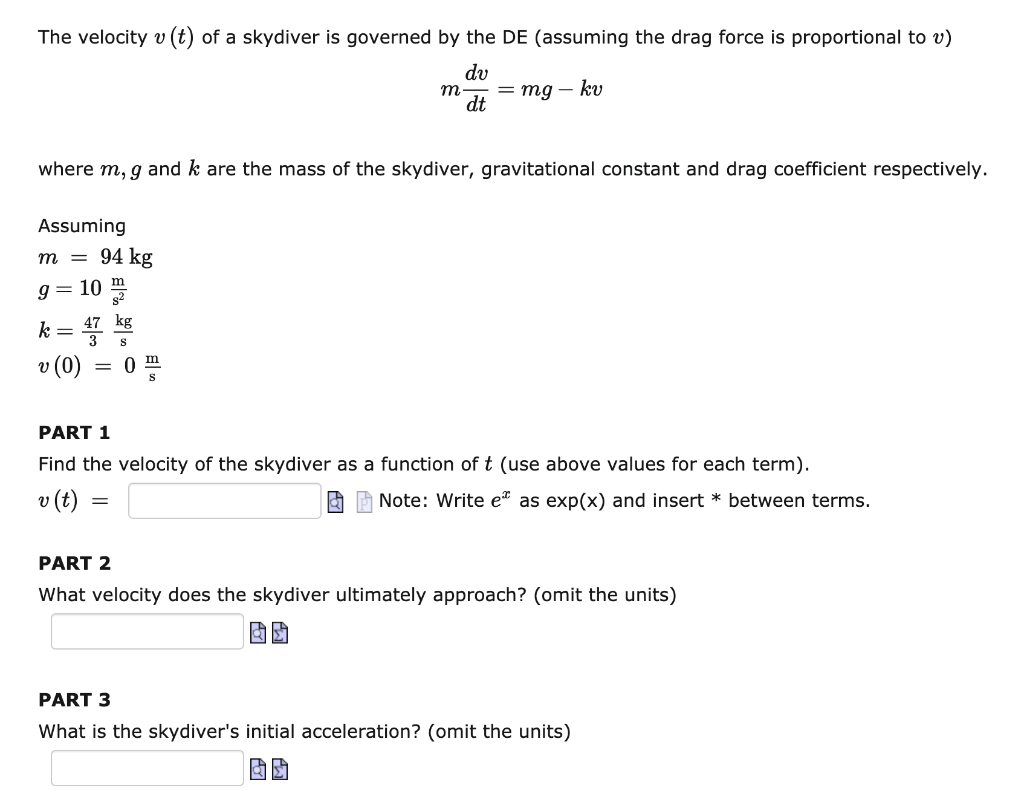The velocity v (t) of a skydiver is governed by the DE (assuming the drag force is proportional to v) dv m. = mg – k dt where m, g and k are the mass of the skydiver, gravitational constant and drag coefficient respectively. Assuming m = 94 kg g = 10 kg k= 3 s v (0) S PART 1 Find the velocity of the skydiver as a function of t (use above values for each term). v (t) Note: Write e as exp(x) and insert * between terms. PART 2 What velocity does the skydiver ultimately approach? (omit the units) PART 3 What is the skydiver's initial acceleration? (omit the units)
The velocity v (t) of a skydiver is governed by the DE (assuming the drag force is proportional to v) dv m. = mg – k dt where m, g and k are the mass of the skydiver, gravitational constant and drag coefficient respectively. Assuming m = 94 kg g = 10 kg k= 3 s v (0) S PART 1 Find the velocity of the skydiver as a function of t (use above values for each term). v (t) Note: Write e as exp(x) and insert * between terms. PART 2 What velocity does the skydiver ultimately approach? (omit the units) PART 3 What is the skydiver's initial acceleration? (omit the units)
Related questions
Question
100%
Please solve all the parts

Transcribed Image Text:The velocity v (t) of a skydiver is governed by the DE (assuming the drag force is proportional to v)
dv
m.
= mg – k
dt
where m, g and k are the mass of the skydiver, gravitational constant and drag coefficient respectively.
Assuming
m = 94 kg
g = 10
kg
k= 3 s
v (0)
S
PART 1
Find the velocity of the skydiver as a function of t (use above values for each term).
v (t)
Note: Write e as exp(x) and insert * between terms.
PART 2
What velocity does the skydiver ultimately approach? (omit the units)
PART 3
What is the skydiver's initial acceleration? (omit the units)
Expert Solution
This question has been solved!
Explore an expertly crafted, step-by-step solution for a thorough understanding of key concepts.
This is a popular solution!
Trending now
This is a popular solution!
Step by step
Solved in 4 steps with 8 images
